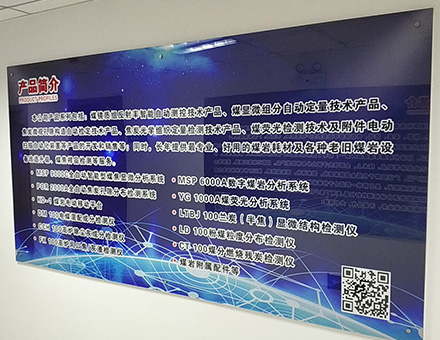Application of Coal Char Microscopic Analysis in Coking and Ironmaking Production
Application of coal and rock analysis in guiding coal procurement and single coal mixing control
The use of coal and rock analysis can more accurately and accurately evaluate the quality of coal. It can achieve the coal types that are really needed in the coal blending, which are really needed, and which can improve the quality of coke, including many The so-called "non-coking coal" is used for coking, further reducing the cost of coking coal blending.
The determination of the reflectivity of the coal vitrinite group can effectively identify whether the coal entering the plant is blended, and the contract with the purchase contract can effectively reduce and eliminate the adulteration of the coal into the plant, and close the production raw materials, which is conducive to the application of the subsequent coal blending technology. At the same time, it will save part of the economic losses caused by the coal blending in the factory.
Make a truly effective evaluation of the coal quality changes of special coal types, and guide the subsequent coal blending.
It can effectively grasp the coal quality of coal blended into the factory and guide the scientific matching of the subsequent coal blending.
Guiding coal plant sub-heap management
At present, the coal-series piles are piled up according to the conventional coal classification grades. Since the same grades of coal can vary greatly, and the phenomenon of adulteration of coal into the factory is serious, the coal quality is unknown when it is piled up after entering the plant. In the case of artificially carried out secondary coal blending.
Combining the coal rock reflectance distribution with the conventional index for controlling the incoming coal sub-stack, it can achieve the ultimate elimination of secondary coal blending in the plant, truly achieve the scientific management of the coal yard, and effectively stabilize the operation of the coal preparation workshop.
Guide, monitor, and adjust production coal blending ratio
At present, coal blending is mainly based on coal classification grades and conventional indicators. It is a qualitative, empirical blending coal. The disadvantage is that once the production has large fluctuations, the reason cannot be found in time, and the quality of coke often fluctuates greatly. As a result, subsequent blast furnace production can only be dealt with by increasing the coke ratio, resulting in an increase in the cost of ironmaking production, a decrease in the utilization factor of the blast furnace, and an accident in production.
The coal rock detection method can effectively monitor whether the production coal blending ratio is correct, whether there is mismatch or missing, which causes the coke quality to fluctuate greatly, and effectively stabilizes the coke quality.
The MSP 9000C system software synthesizes the coal blending map to simulate coal blending, which can guide the formulation of the coal blending ratio and guide the utilization of coal blending into the plant. Ultimately, it stabilizes the quality of coke.
Through the combination of coal rock means and conventional detection indicators, the coal blending ratio can be more scientifically developed, and the cost can be effectively reduced, and the coke quality can be further improved under the premise of stabilizing coke quality. Create greater economic benefits for the company.
Studying coke degradation in blast furnaces and guiding blast furnace coal injection
Using the automatic block coke pore rapid analysis function in the coal rock analysis system, the pore distribution and wall thickness structure of the blast furnace coke and the tuyere can be comprehensively evaluated. It is beneficial to analyze the deterioration mechanism and process of blast furnace coke and further guide the blast furnace production.
Through the optical structure inspection of coke, it is possible to evaluate the reasonable ratio of coal blending ratio of blast furnace coke, coke quality and alkali resistance. Conducive to guiding the production of blast furnaces.
Through the detection of unburned carbon residue in the tuyere, the combustion of pulverized coal can be studied, and the amount of coal injected and the ratio of coal injection can be guided in time.

















